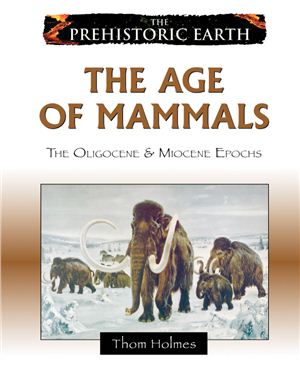Chelsea House Publications, 2008. - 190 pages. Series "The
Prehistoric Earth".
About 15 million years ago, the diversity of mammals worldwide reached an astounding peak. As the continental landmasses shifted and temperate climates encouraged flowering plants, woodlands, and grasses to grow in abundance, mammals stepped into ecological niches left vacant by the extinction of the dinosaurs. The Oligocene and Miocene epochs saw the foundations of mode-day mammal groups. Adaptations of the jaw, teeth, skull, limbs, and other traits led to mammals that were better adapted for every mode of life. The Age of Mammals explains how mammals an
About 15 million years ago, the diversity of mammals worldwide reached an astounding peak. As the continental landmasses shifted and temperate climates encouraged flowering plants, woodlands, and grasses to grow in abundance, mammals stepped into ecological niches left vacant by the extinction of the dinosaurs. The Oligocene and Miocene epochs saw the foundations of mode-day mammal groups. Adaptations of the jaw, teeth, skull, limbs, and other traits led to mammals that were better adapted for every mode of life. The Age of Mammals explains how mammals an

